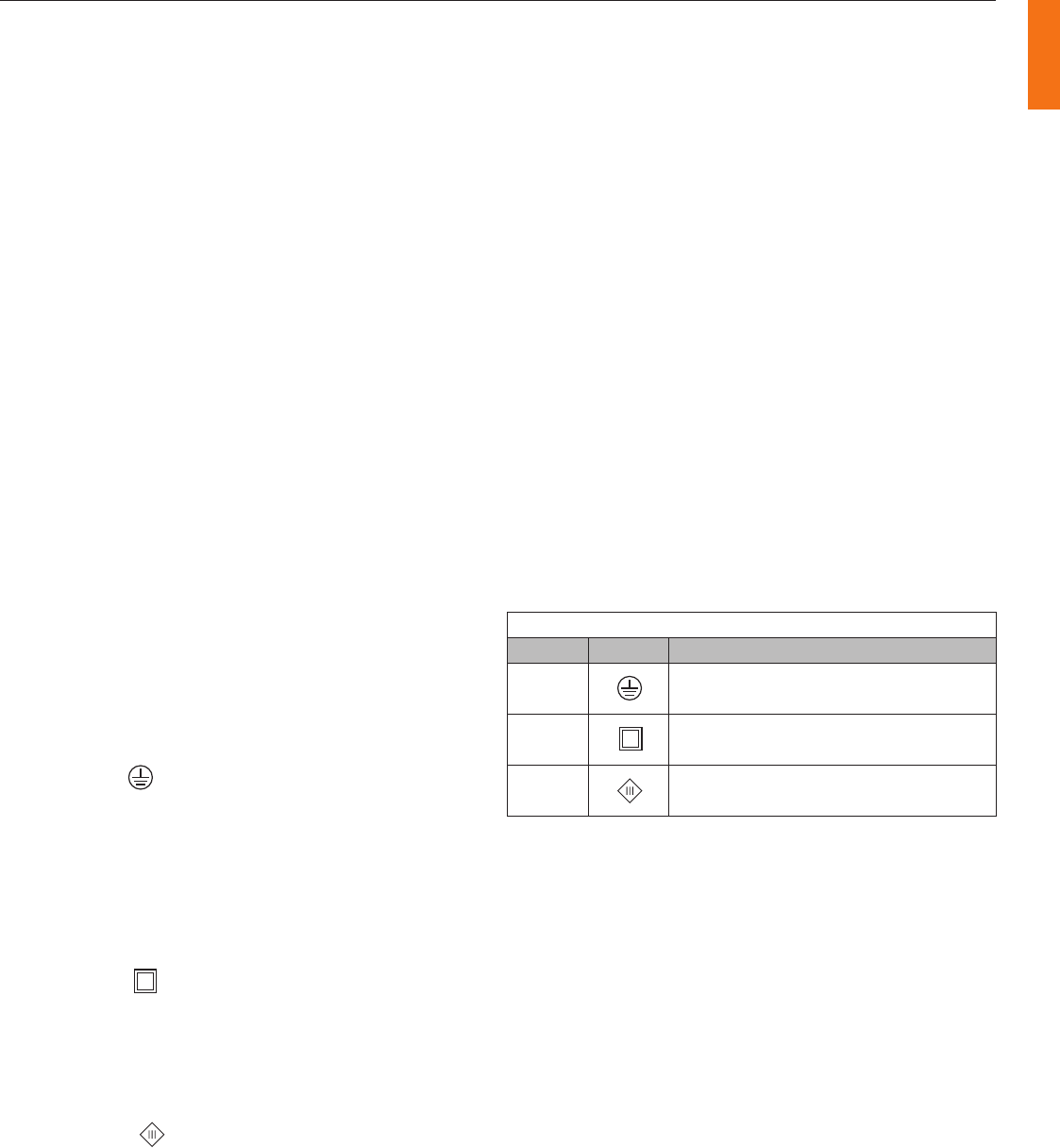
Specication data luminaires
Philips indoor luminaires Technical data 12.3
Technical data
Electrical supply
An important step has been taken to harmonise the European mains
supply voltage. From 2003 onwards the voltage delivered for use in
buildings is 230 V/400 V with a tolerance of ± 10%.
Philips luminaires are designed for the future and will operate well
on the supply of today and tomorrow. An example is the electronic
ballast designed for a rated mains voltage of 220-240 V, with tolerance
for safety of +/- 10% and tolerances for performance of –8% and +6%,
covering the full range between 202 V and 254 V.
Electrical safety classes
Electricalequipmentisclassiedaccordingtotheprotectionlevel
against electrical shock. In normal operation as well as during service
and maintenance, luminaires should be protected against electrical
shock. The safety of a luminaire depends on electrical, mechanical and
thermal aspects, both under normal and fault conditions. The electrical
safetyclassicationdrawnupbytheIECembraces3luminaireclasses:
ClassI,IIandIII.LowvoltageluminairesdesignedtomeettheSafety
Extra-LowVoltage(SELV)limitscanbecategorizedasClassIII.
The table gives a brief description of each electrical safety class.
Theofcialdenitionsaretoolongtobereproducedinfullhere,but
can be summarized as printed below. If a protective earth connection
isavailable,ClassIluminairesareapplied.However,ifthereisnoearth
connectionorifeddycurrentsarepresent,ClassIIluminairesshall
beapplied.ClassIIwater-protectedluminairesareappliedinwetand
outdoor locations. Local electricity boards can provide the appropriate
advice.
Class I - symbol
Luminairesinthisclasshavebasicinsulationandarettedwithan
earthingpoint(identied)fortheconnectionofallthoseexposed
metal parts that could conceivably become live in the presence of a
fault.
WheretheClassIluminaireisprovidedwithaexiblepowerlead,it
must include an earth wire.
Class II - symbol
Luminaires in this class are designed and constructed in such a way
that exposed metal parts cannot become live. This can be achieved
by means of either reinforced or double insulation, but without a
provision for protective earthing.
Class III - symbol
The luminaires in this class are those in which protection against
electric shock relies on supply at Safety Extra-Low Voltage (SELV),
typically 12 V or 24 V, and in which voltages higher than those of SELV
(50Va.c.r.m.s.)arenotgenerated.AClassIIIluminaireshouldnotbe
ttedwithafacilityforprotectiveearthing.
Ambient temperature
Philips luminaires are designed to meet the (environmental) conditions
under which they are most likely to be used. The maximum ambient
temperature Ta under which a luminaire can be operated safely, is
indicated on the type label on the product; if no indication is
given the
productisintendedforamaximumambienttemperatureof25°C.The
ambienttemperaturealwaysreferstothetypicaluseoftheluminaire:
indoorsoroutdoors.Themajorityofluminairesdevelopedforofce,
shop and general indoor applications show no Ta, thus indicating
25°C.Luminairesdesignedforindustrialhigh-bayapplicationsare
designedforambienttemperaturesashighas40to45°C.Theuse
ofluminairesabovetheirspeciedmaximumambienttemperature
may reduce safety margins and will mostly lead to a reduction of the
lifetime of the various components. Electronic equipment, ballasts and
lighting controls are particularly sensitive to overheating. Although
(extremely) low temperatures do not normally affect the safety of
luminaires, this may affect operation during the starting-up phase of
thelamp.Fluorescentlampsshouldnotbeusedbelow–5°Cto–10°C.
Upon request special solutions are often possible for higher or lower
ambienttemperatures.High-intensitydischargelampsfunctionwell
below–20°Candarethemostsuitablelampsforoutdooruse.
Protection against electrical shock
Safety class Symbol Protection
I
Basic insulation plus protective earth connector
II
Double or reinforced insulation, no provision for
protective earthing
III
Supply of safety extra-low voltage
Indoor_2008_Chapter_12_LIS.indb 3 20-05-2008 14:32:45


















